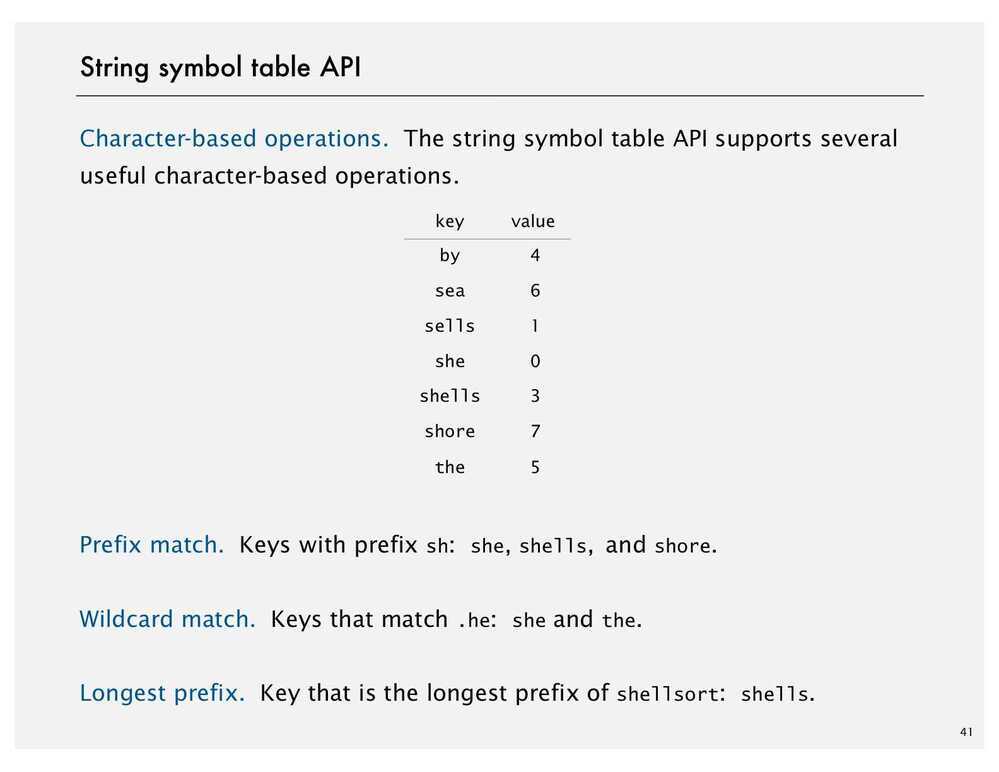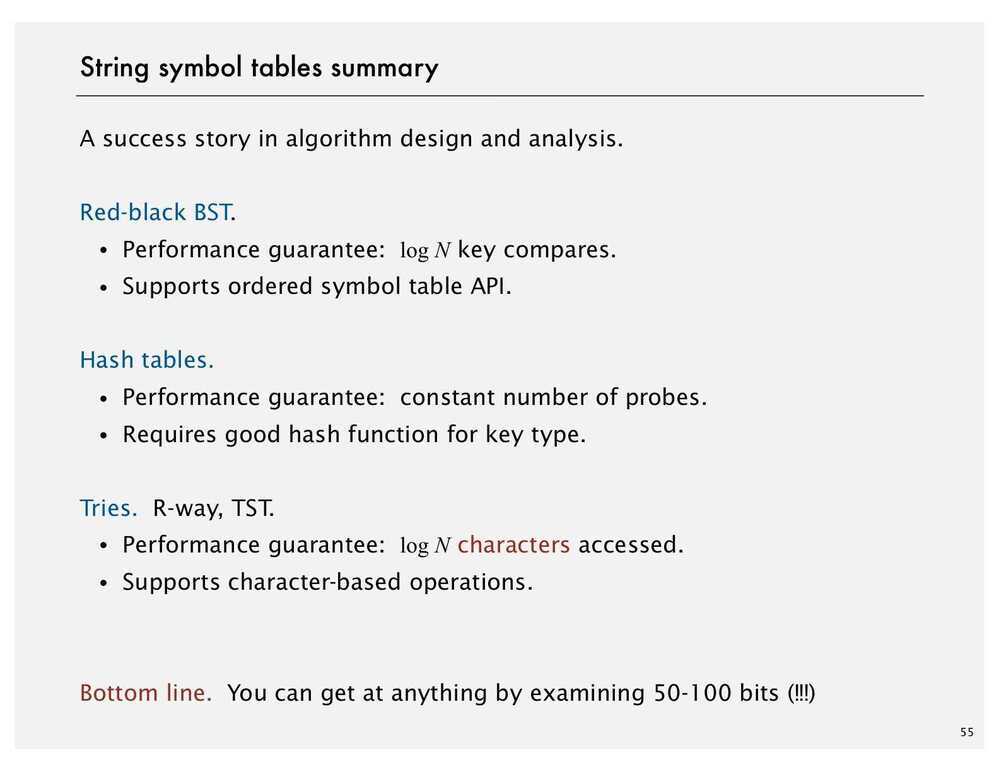Elementary Symbol Tables
Symbol Tables (Associative Arrays, Maps and Dictionaries)
Key-value pair abstraction -
- Insert a value with specified key
- Given a key, search for the corresponding value
Applications
- DNS lookup
- Insert domain name with specified IP address
- Give domain name, find corresponding IP address
- Reverse DNS lookup
- Dictionary
- Web search
- Compiler
- Routing table
- Genomics
- File system
- Symbol tables first used in compilers, for doing fast lookups for symbols
Associative array abstraction
Associate one value with each key
Keys and values
Value type: Any generic type
Key type:
- Assume keys are Comparable, use compareTo()
- Assume keys are any generic type, use equals() to test equality; use hashCode() to scramble key.
- Use immutable types for symbol table keys
- Immutable in java - Integer, Double, String, java.io.File
- Mutable in java - StringBuilder, java.net.URL, arrays
Implementation
-
Using Linked List (Unordered)b. Using Ordered Array
-
Using Binary Search
Keep two array, one for keys and other for values (order by keys)
- Using Binary Search Tree
A BST is a binary tree in symmetric order
Each node has a key, and every node's key is:
- Larger than all keys in its left subtree
- Smaller than all keys in its right subtree | implementation | worst-case cost (after N inserts) | | | average case (after N random inserts) | | | ordered iteration? | key interface | |-------------|--------|------|-------|--------|------|-------|---------|-----------| | | search | insert | delete | search hit | insert | delete | | | | sequential search (unordered list) | N | N | N | N/2 | N | N/2 | no | equals() | | binary search (ordered array) | lg N | N | N | lg N | N/2 | N/2 | yes | compareTo() | | BST | N | N | N | 1.39 lg N | 1.39 lg N | ? | yes | compareTo() | | 2-3 tree | c lg N | c lg N | c lg N | c lg N | c lg N | c lg N | yes | compareTo() | | red-black BST | 2 lg N | 2 lg N | 2 lg N | 1.00 lg N | 1.00 lg N | 1.00 lg N | yes | compareTo() | | separate chaining | lg N | lg N*| lg N* | 3.5*| 3.5* | 3.5*| no | equals() hashCode() | | linear probing | lg N* | lg N*| lg N* | 3.5*| 3.5* | 3.5* | no | equals() hashCode() |
Symbol Table Applications -
- Sets
A collection of distinct keys
Application - Exception filter
- Read in a list of words from one file
- Print out all words from standard input that are
{in, not in}the list- Whitelist a set of strings or objects
- Blacklist a set of strings or objects
Application of Exception filter -
- Spell checker
- Browser
- Parental controls
- Chess
- Spam filter
- Credit cards
- Dictionary Clients
Applications -
- DNA sequence - CODON
- IP - URL
- Email- Username
- Indexing Clients
- File Indexing
Index a PC (or the web)
Goal: Given a list of files specified, create an index so that you can efficiently find all files containing a given query string
Solution: Key = query string; value = set of files containing that string
- Book index
- Concordance (with the search result give context of the word, like few texts before the search word and few texts after)
Goal: Preprocess a text corpus to support concordance queries: given a word, find all occurrences with their immediate contexts. 4. Sparse Vectors
Sparse Matrix-vector multiplication
Using symbol table, we can have space proportional to number of nonzero values. We can use hash table because the order is also not important. Keys will be the position of the nonzero element in each row and value will be the actual value.
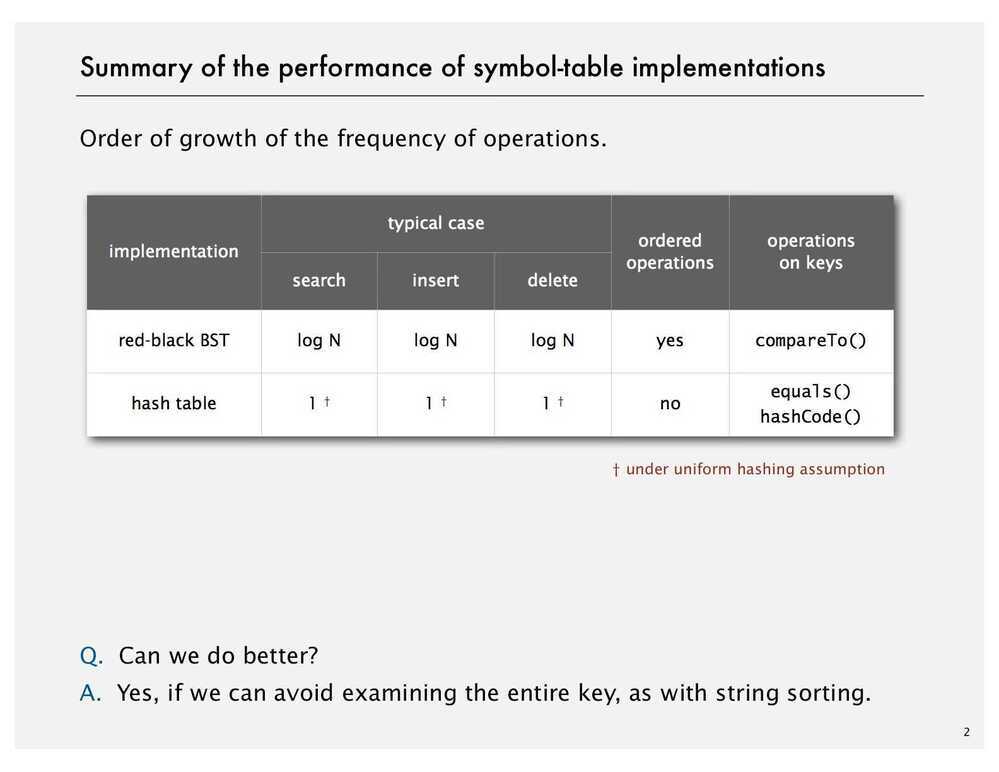
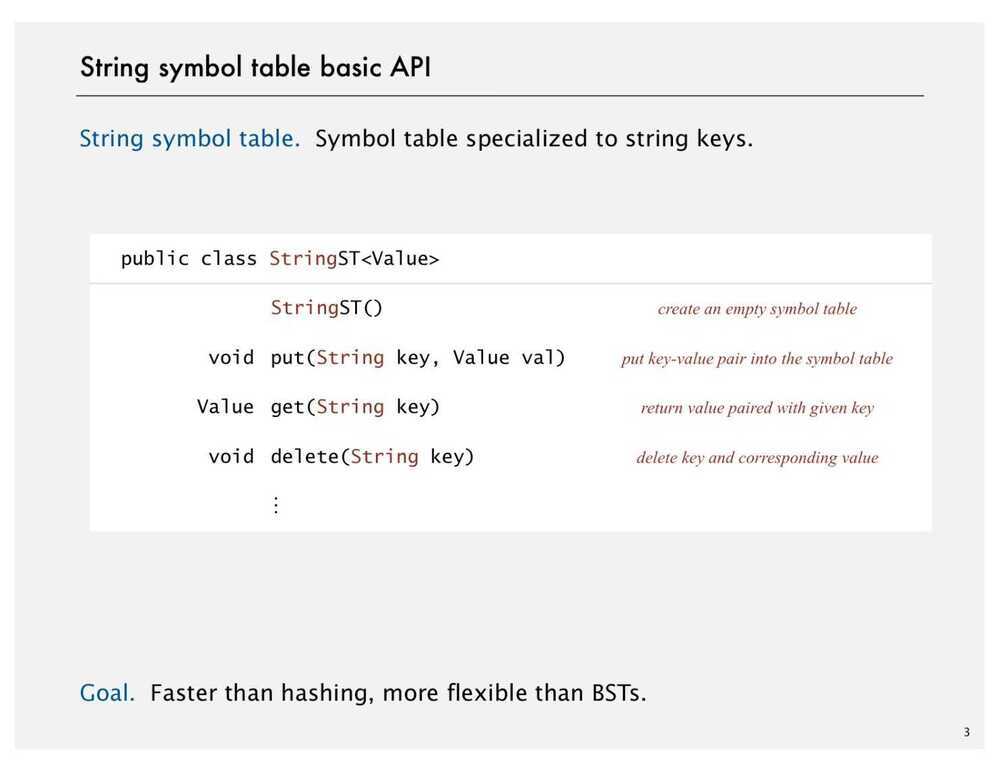
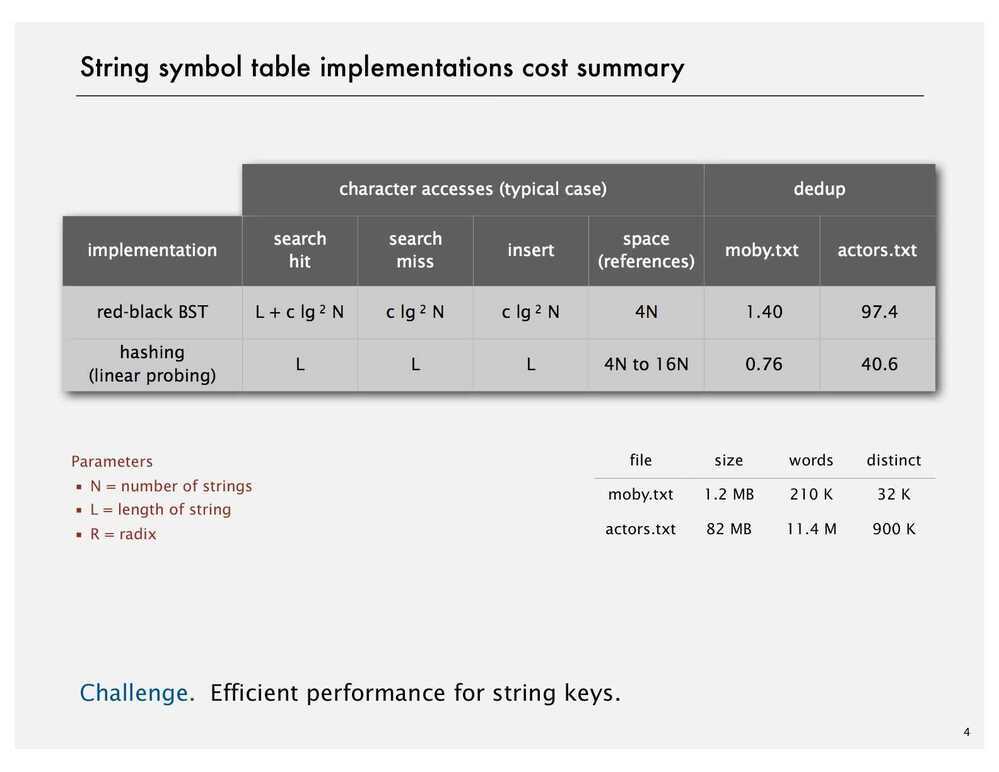
Character Based Operations
